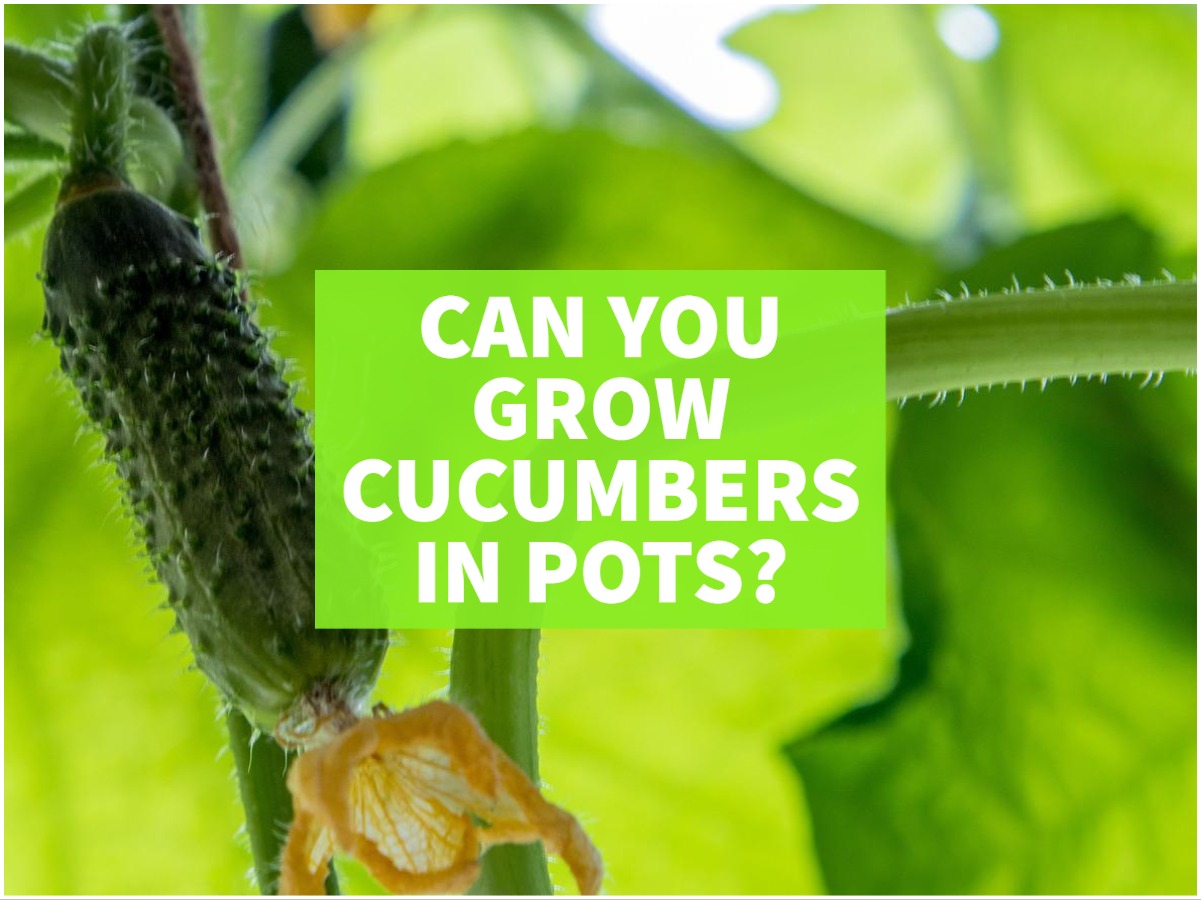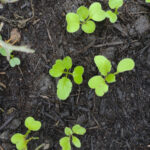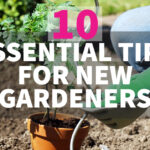This post may contain affiliate links.
Yes, you can grow cucumbers (Cucumis sativus) in a pot, container or raised bed so long as you provide them with good soil, adequate water, and adequate sunlight. You will need to provide a stake or trellis, in the pot or nearby if you plan to grow them vertically. A vining cucumber will trail and take up a lot of space if no trellis or other structure is provided for them to climb.

Bush cucumbers are an unusual type of cucumber which forms a small compact bush rather than a vine. There will likely require staking, or a tomato cage, but not a trellis.
Tomato cages are usually too small for indeterminate tomatoes but work well for bushy plants like peppers and chillies. Always buy the best you can find as cheap brands break fast.
Cucumbers in Pots
Cucumbers are considered a summer annual vegetable in the cooler parts of the world, but here in the tropics, we can grow cucumbers in winter.
So yes, in parts of Australia, South Florida, Hawaii, Florida, south Asia, and other tropical regions, cucumbers can be grown in winter.
Cucumbers have one of the highest heat requirements of all the commonly grown food plants, and in the UK they are commonly grown in greenhouses.
Most Cucumber plants need temperatures of 65-75°F. or 18-23 °C. Cucumbers start to struggle below 55°F or 13°C. Our temperatures here in the tropics can dip to 13°C at night in mid-winter, but so far the cucumbers are tolerating it.
Buy yourself a simple home weather station and monitor indoor and outdoor temperatures to see if your outside temperature is getting too low for cucumber, if so, hold off and plant them towards the end of winter, as temperatures are rising. These are great fun and you should be able to get one for under $50. See here, we have one, it’s useful.
Cucumbers need about 8-10 weeks to ripen, depending on the variety.
Many varieties of cucumbers suffer from pests and diseases quite badly, so growing cucumber plants may actually be helpful in keeping them pest free, so long as you provide adequate moisture.
Cucumbers can even be grown in a pot indoors if you have sufficient space, heat, and light, a conservatory or sun room could be ideal for growing cucumbers in containers indoors.
Types of Cucumber to Grow in Pots
There are many types of cucumber, from tiny cucamelons to giant Armenian cucumbers. The tiny cucamelon or mouse melon isn’t strictly a cucumber (nor a melon), but we tend to use them in a similar way and yes, they can also be grown in pots.
Cucumbers are of the family Cucurbitaceae, as are all members of the gourd family, flowering plants that can be annual, but some (such as pumpkins) can grow as perennials in tropical climates. Pumpkin vines can grow for years, cucumbers tend to be more short-lived and delicate.
The smaller, more compact varieties of cucumber are better suited to growing in pots.
- Slicing Cucumbers include corinto, longfellow, marketmore,
- Persian Cucumbers include Katrina, Socrates,
- English Cucumbers
- Pickling Cucumbers include Russian, Armour, National, Adam Gherkin,
- Armenian Cucumbers – enjoy heat and suit the tropics.
Best Types of Cucumber to Grow in Pots
Smaller and bush varieties of cucumber will be your best option to grow in pots, these include the following cucumber varieties.
Links will take you to an option to buy seeds. Check product descriptions for planting times, disease resistance, heat and cold tolerance.
- Spacemaster
- Bush Slicer
- ,Mini Me
- Green Fingers Persian
- Marketmore
Harvesting Cucumbers
Cut your ripe cucumbers off the vine with clean sharp scissors or other cutting tool. Don’t try to pull or twist the cucumbers off as you can break the vine.
Harvest cucumbers slightly under ripe and under mature as you don’t want a cucumber that’s full of seeds. If the cucumber is starting to turn yellow it’s past its best.
If your cucumber is full of seeds you can just scoop them out with a spoon and eat the rest. You may beable to save those seeds to plant if they are fully mature.
A cucumber that has been irregularly or underwarered may become bitter.
The same as for any flowering plant, removal of its fruit and seeds (the cucumber) will stimulate the plant to produce more flowers and fruit. Yes, a cucumber is a fruit, actually a type of berry, like bananas.
Watering Cucumbers in Pots
Drip irrigation, ensuring a constant level of moisture, is ideal for cucumbers.
If your only option is to hand water, water the soil around the base of the plant and try to keep water off the leaves, it may pool and promote disease. Never get water on leaves in full sun.
The root zone is where you want the water to be, and a layer of mulch (not touching the stem) will help maintain moisture levels in your pot.
A non-porous, ceramic or plastic pot or container is your best choice for water retention with cucumbers. cucumbers are thirsty plants.
You can, of course, grow cucumbers in porous containers (terracotta, wood, fabric) but you’ll need to be more thorough with constant watering.
Pests and Diseases in Cucumber Plants
Typically cucumbers can be affected by the following pests and diseases:
- squash bugs
- downy mildew
- fusarium wilt
- anthracnose (a fungal disease)
- slugs
- aphids
- snails
- powdery mildew
- cucumber beetles
- bacterial wilt
- chickens (chickens can and do eat my cucumbers, be sure to chicken-proof your cucumber bed or container.
Healthy plants with adequate airflow, nutrients, and water, are generally more resistant to pests and diseases. I like to succession plant cucumber seeds, because they do succumb to pests fairly fast in my climate. A disease and heat resistant variety, like green gem (heat) or national pickling (disease) is helpful.
You can spray with soapy water or a neem solution to deter pests, but planting more works best for me. I simply push a few cucumber seeds into the pot every few weeks and remove plants that are past their best.
Growing cucumbers in pots, on good trellises with abundant air-flow, plus fertile soil and plenty of water, will help your cucumbers survive pests and diseases.
Direct Sew Cucumbers or Start in Seed Trays?
In my experience, direct sewn cucumber seeds grow and mature as fast or even faster than bought cucumber starts or cucumber seeds started in trays in a greenhouse or indoors and transplanted.
I’ve tested this, growing direct from seed and from a transplanted start side by side, in conditions as identical as is possible. The direct sewn cucumber seed grew faster and overtook the start.
Cucumbers generally don’t enjoy being transplanted, and may take some time to recover from transplant shock, so if possible, if it’s warm enough, direct sew cucumber seeds.
Cucumbers are wonderful plants to grow and should give you abundant fresh food from your garden. You can eat cucumbers in a salad, make refrigerator pickles (dill would be a great companion plant for cucumbers as you will use it in your pickles), or make tzatziki. A garden-fresh cucumber should have more nutrients and be chemical-free, it also won’t come wrapped in plastic, all the usual advantages of growing your own fruit and veg.







